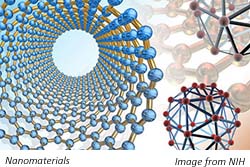
Author Purposes

Why do people write things down?
The first bits of writing found by archaeologists looked something like accounting ledgers and local laws. Today, people record everything from grocery lists, to birthdays, to family histories.
Before writing (if we can imagine the time), information traveled one voice at a time. But the introduction of the printing press (ca. 1436) and now the computer and internet have gone down in history as among the top inventions of all time (with things like the wheel and contained fire). People write to publish knowledge. It's what humans do.
American democracy advanced on the leaves of patriotic pamphlets. The Federalist Papers forged the United States into being. In the words of Edward George Bulwer-Lytton (b. 1803), "The pen is mightier than the sword." People still find that the written word promotes change.
People of all ages and walks of life use journaling to figure out life, values, concepts, and ideas. Academic papers, reports, and essays are also ways to analyze, evaluate, and then share those results with others.
It's wonderful to be transported by a good story! People develop their creative talents to delight children or adults by simply sharing a make-believe world and new way of seeing things.
People write for a reason.
An author always has an overall purpose or reason for writing a passage. In the most basic terms, authors write to —
Being aware of an author's reason for writing will improve your reading comprehension. When you consider what the author is trying to accomplish, it will be easier to identify the main point and key ideas of a passage.
Practice
These articles will likely show you something new about the world and its innovations. How does knowing the authors' purposes for these articles help you understand key ideas?
Nanoscale Materials

When you see "nano-" think small. Really small. Most nanoscale materials are too small to be seen even with conventional lab microscopes.
By definition, a nanometer is 1 x 10-9 meters, or one millionth of a millimeter. On this scale, matter develops new properties: Carbon becomes stiffer than steel, and gold reflects different colors than the gold in our jewelry. New properties of nanomaterials are already being used to improve medical testing, consumer products, and manufacturing processes.
Researchers are also studying the risks. The nanoscale materials' small size and highly reactive nature make them desirable for improving products and testing. However, those same properties raise concern about their long-term effects on the human body and the environment.
The author wrote this passage in order to --
A. inform readers about benefits and risks of nanoscale materials.
B. persuade researchers not to use nanoscale materials.
C. alert the public about the risks of nanoscale materials.
D. explain how researchers work with nanoscale materials.
Wind Energy

Although wind energy has started to provide the nation with a source of clean energy, it is also presenting several challenges. In order to make sure the investment in wind turbines is cost-effective, one needs to determine if the site receives a sufficient amount of wind. Since the turbines have expansive blades, these sites should ideally be in remote locations. However, extensive transmission lines then need to be built to connect that farm with a city in need of electricity. Some people are also concerned about the rotor's blades. They make a "whooshing" sound as they turn and are known to kill birds passing by. In response to those reports, however, these environmental issues have been greatly reduced through advancements in technology or proper siting of the wind plants.
The topic sentence highlights the purpose of this article. It is mainly to –
A. hail wind energy for its environmental benefits.
B. persuade people that wind energy is not environmentally friendly.
C. inform people about some down-sides of wind energy that need to be considered.
D. analyze how to make wind energy most cost effective.
Answer Key
Nanoscale - A
The paragraph explains benefits and risks in a balanced way. The balanced structure supports general information. There is not an emphasis on risks. A is the best answer.
Wind Energy - C
The topic sentence points to the fact that the paragraph wants to inform people about "challenges" regarding wind energy. Options A and B suggest a persuasive viewpoint in one direction or the other which does not reflect the balanced approach of the paragraph. The passage is not detailed and analytical enough to suggest option D. C is the best answer.
Sources
1. Based on information from http://www.niehs.nih.gov/news/sya/sya-nano/index.cfm
2. Brainfuse ASVAB Paragraph Quiz 4